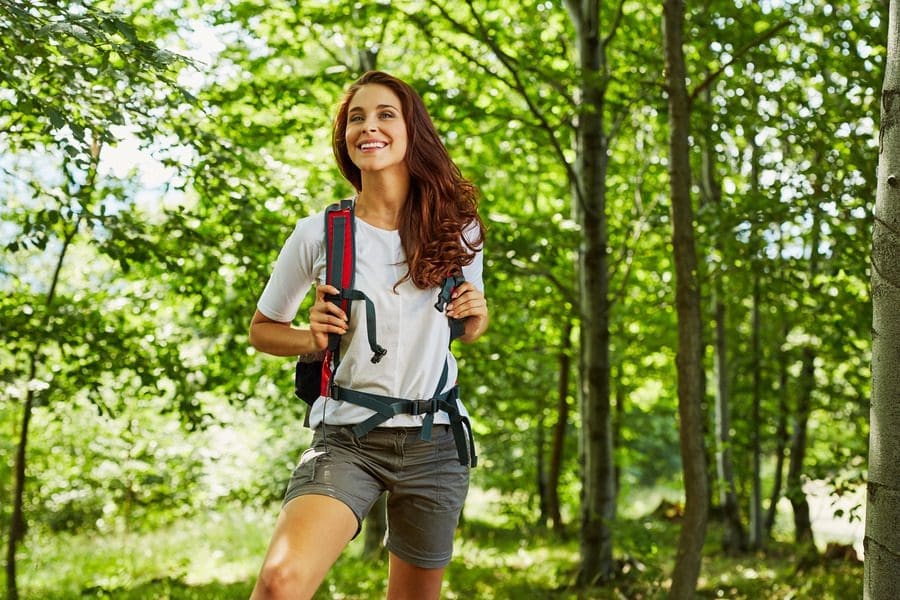Our bodies need exercise, fresh air is good for us, and we could all use a little more vitamin D. The “why” we should go hiking should speak for itself, but the “how” is another story! Luckily, we are here to fill you in on what you should know before going hiking.
Hiking Gear
Here are just a few things you should have before you go hiking. The more you hike, the more you’ll learn about your specific needs on the trail.
- Backpack: You’ll want a backpack with a supportive hip belt to distribute the weight evenly. You may want to consider one with a reservoir that allows you to drink from a hose while you hike.
- Sunscreen: You’ll want a sweat-proof formula with an SPF of at least 30, but you may also want a wide brimmed hat and sunglasses. Just because it’s not sunny when you leave doesn’t mean it’ll stay cloudy!
- Navigation Tools: Whether it’s a map or a compass, you’ll want a tool that can help you navigate your surroundings – in case your phone dies.
- Plenty of Water: No reservoir? No problem! Pack a couple of lightweight water bottles in your backpack. Better yet, use a Camelback bag.
- Snacks That Fuel: Think: protein bars, nuts, dried fruits, and raw vegetables – foods that are filling and give you energy. Always take more water and food than you think you’ll need, just in case you end up on the trail longer than you planned.
- First Aid: Your first aid kit doesn’t have to be extensive; just make sure you can treat any blisters or minor cuts that may happen along the way.
- A Light Source: In case your hike lasts past sunset, make sure you’ve got a flashlight or headlight.
What to Wear Hiking
The name of the game is layers. Of course, you should check the forecast, but you should also assume that anything can happen in the elements. Layers are important because you can shed or add them as you experience various temperatures throughout the day. Layers should be moisture-wicking, meaning they dry quickly and move sweat away from your body. Steer clear of heavy materials such as cotton and denim because they are heavy and slow-drying. You’ll also need comfortable and supportive hiking boots that fit your feet.
How to Find a Good Trail
- Visit AllTrails to find trails in your area, read reviews, and discover current trail conditions.
- Talk to friends who enjoy hiking and get their recommendations. Better yet, tag along with them.
- If you’re traveling, check out the visitor center and talk to the locals.
- When it comes to choosing the right trail, consider the following:
- How much time you have
- Your fitness level
- Trail difficulty level and elevation
- The time of year, the weather, and what time the sun sets.






